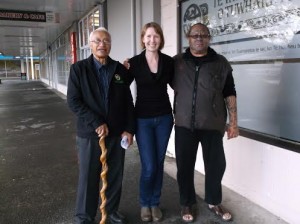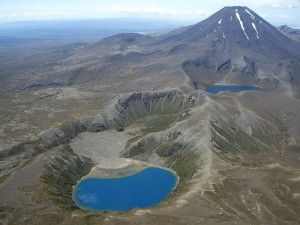By Paulette Wallace

‘Social value’ is not a term that national park organizations in the United States, Canada and New Zealand have tended to use. In fact, when park organizations have ventured into the challenging territory of recognizing the values of people―it has generally been to consider the values of ‘traditional peoples and practices’ of a distant bygone era, or to subsume the social into the consideration of historic significance.
I use social value here, to denote social connections, networks, place attachments—not necessarily related to historic significance, which can include various stakeholders, interest and ethnic groups, and can involve individuals and/or collectives. It is at this point where some might argue that national park organizations have the primary purpose of preserving nature and national identity—therefore, any consideration of social values which might destabilize this mission, or confuse its fixed and constant agenda, has no place within the remit of a national park organization.
My response to this—is that an impression of this kind is exceedingly outdated, and it has been proven to be outmoded by the parks organizations themselves. For example, the US National Park Service is currently establishing an ‘urban agenda’ in time for its 2016 centenary, to address how the organization might better engage with its communities; and Parks Canada have been developing the ‘national urban park’ to embrace a less ‘pristine’ park environment in a populous Toronto area. These recent initiatives underline how park organizations recognize the need to evolve, and they demonstrate a growing interest in establishing closer relationships with the people who engage with their parks. Yet the initiative adopted by park organizations that I wish to discuss in more detail here, is the use of cultural landscapes as a tool for heritage management.
Cultural landscapes are commonly described as being a bridge between nature and culture—they are places where natural and cultural heritage values collide, and for the last 20-30 years, the US National Park Service and Parks Canada have been leading the way in identifying and managing cultural landscapes as part of their cultural resource management programs. While in New Zealand, the Department of Conservation (DOC) holds the prestige of being the manager of the first cultural landscape inscribed on the World Heritage list in 1993.

Nevertheless, while the embrace of cultural landscapes demonstrates the park organizations’ commitment to keeping up with changing perceptions of natural and cultural heritage, the way that cultural landscapes have been applied are heavily informed by static, entrenched policies of the past. These policies essentially negate the potential of cultural landscapes to promote new approaches to park management that recognize the way that people actively engage with their surroundings.
For instance, the cultural landscapes management policies developed by the US National Park Service focus on how to manage the physical form of an assembly of cultural resources, and they organize cultural landscapes into ‘landscape characteristics’ that recognize mainly visible tangible aspects. Parks Canada follows a similar approach, where its cultural landscapes are made up of ‘character-defining elements’, and while it does also promote the notion of ‘aboriginal cultural landscapes’ as not so determined by the tangible, Parks Canada applies this independently from the ‘character-defining elements’ used in its non-indigenous cultural landscapes program.

Then in New Zealand, DOC might be described as paying lip service to the social values of Tongariro National Park in its identification of it as a cultural landscape, while failing to recognize these values in the day-to-day management of the park. DOC supported the inscription of Tongariro National Park on the World Heritage list recognizing the associative values of the iwi (tribe) of Ngāti Tūwharetoa and their relationship to Mount Tongariro―which added to the park’s existing inscription for its natural values. Yet a recent Treaty of Waitangi report has found among other things, that the New Zealand government has disregarded the cultural and social values of Māori in carrying out the management of the park, and it recommends that the park be taken out of DOC control and managed in the future by a statutory authority made up of representatives from the government and Māori.
Therefore, as we settle into the twenty-first century and prepare to welcome 100 years of the US National Park Service, there is a need for park organizations to include the public who represent their various park communities, in decision making so that there might be a new generation of joint ambassadors recognizing the social values of people in the landscape stewardship of the future.
For further discussion on how American, Canadian, Australian and New Zealand park organizations have been employing cultural landscapes as a tool for heritage management, see:
Wallace, P 2015, ‘Approaching cultural landscapes in post-settler societies: ideas, policies, practices’, submitted in fulfillment of the requirements of the degree of Doctor of Philosophy, Deakin University, Melbourne, Australia.
Paulette Wallace is the recently named Executive Officer for the Australian Convict Sites, a serial World Heritage property made up of 11 sites around Australia.



2 Responses
I would like to commend Paulette’s thinking and analysis in raising the issue of ‘social value’. Australia has a long history of identifying, assessing, and managing ‘social value’ in its national parks: sometimes well, sometimes not. A key challenge for agencies in this regard is to allow adequate time for the process of (respectfully) documenting peoples’ connections to place and landscape; and acknowledging the potential for conflict between social and other heritage values (not least of all ecological).